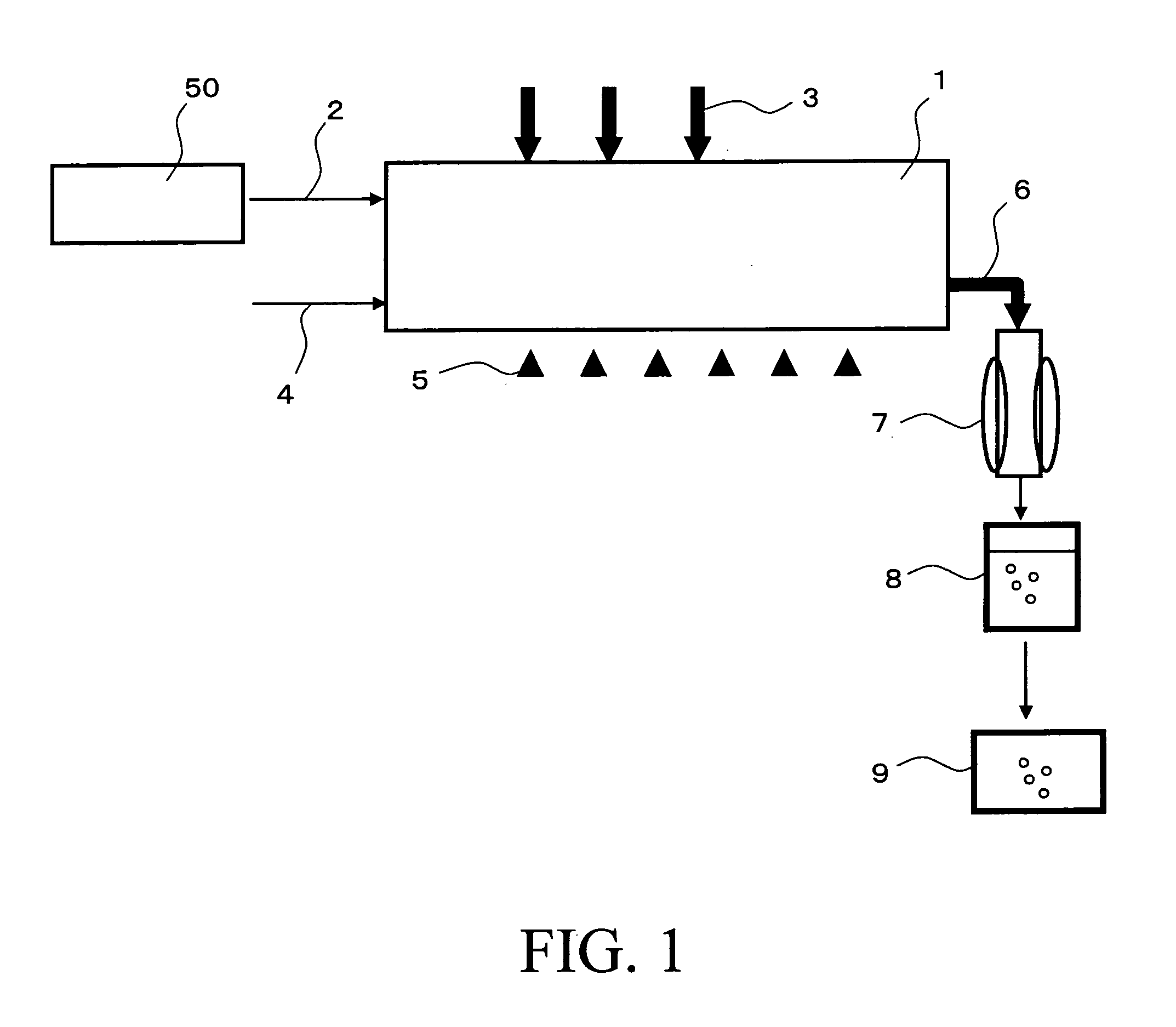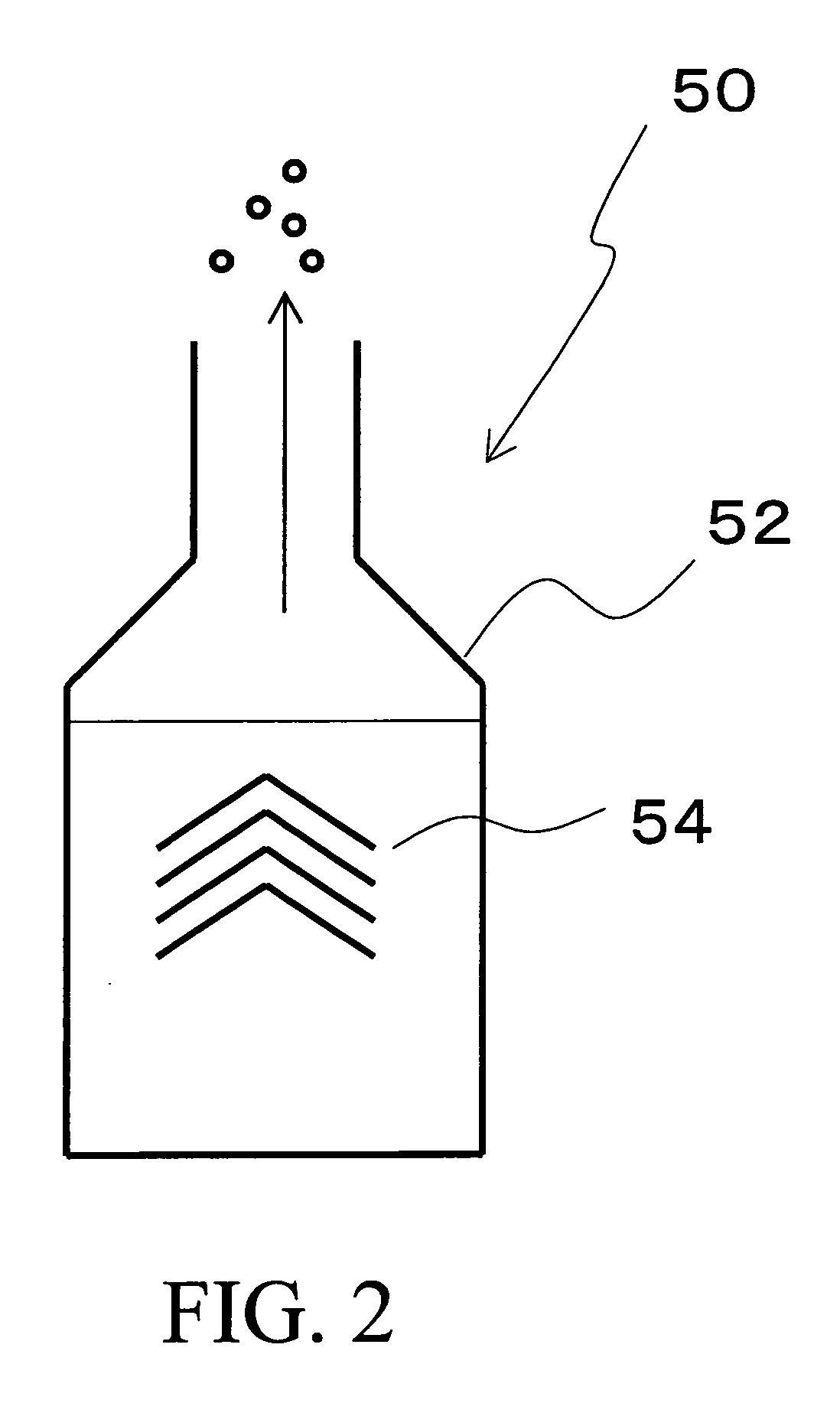Method of forming a particle and apparatus therefor
a particle and particle technology, applied in the field of forming particles and an apparatus therefor, can solve the problems of not easy to form the core and the shell under good control, not easy to avoid mixing the core, and structure destruction
- Summary
- Abstract
- Description
- Claims
- Application Information
AI Technical Summary
Problems solved by technology
Method used
Image
Examples
first embodiment
[0044] (First Embodiment of the Invention)
[0045]FIG. 1 is a schematic drawing expressing the main part of the apparatus for forming a particle according to the first embodiment of the invention. According to the first embodiment, the core portion of the dual-structure particle is formed using a droplet, while the shell portion thereof is formed by gas phase reaction using a raw material gas.
[0046] That is, the apparatus for forming a particle according to the first embodiment comprises: a reaction vessel 1; a droplet forming section 50; a droplet feeding section 2 which feeds the droplet formed in the droplet forming section 50 to the reaction vessel 1; a raw material gas feeding section 3 which feeds a raw material gas to the reaction vessel 1; an inert gas feeding section 4 which feeds an inert gas such as nitrogen as the carrier gas to the reaction vessel 1; a heater 5 as an exciter mounted to external wall of the reaction vessel 1; a discharging section 6 located opposite to th...
second embodiment
[0123] (Second Embodiment of the Invention)
[0124] The second embodiment of the invention will be described in the following.
[0125]FIG. 10 is a schematic drawing for explaining the second embodiment of the invention. For the same section as described before relating to FIG. 1, the same reference number is given without giving detail description.
[0126] One of the characteristics of the second embodiment is to introduce a reducing agent for reducing the raw material into a droplet followed by feeding to the reaction vessel 1.
[0127] The following is the description of the method of the second embodiment: [0128] (1) First, an inert gas is fed to the reaction vessel 1 via the gas feeding section 4 to create a gas stream flowing from the reaction vessel 1 to the discharging section 6, the cooler 7, the holding section 8, the heater 9, and the filter, successively. [0129] (2) The heater 5 heats the inside of the reaction vessel 1 to a temperature of from 200° C. to 400° C. By the heating...
PUM
| Property | Measurement | Unit |
|---|---|---|
| Temperature | aaaaa | aaaaa |
| Concentration | aaaaa | aaaaa |
| Electrical conductor | aaaaa | aaaaa |
Abstract
Description
Claims
Application Information
 Login to View More
Login to View More - R&D
- Intellectual Property
- Life Sciences
- Materials
- Tech Scout
- Unparalleled Data Quality
- Higher Quality Content
- 60% Fewer Hallucinations
Browse by: Latest US Patents, China's latest patents, Technical Efficacy Thesaurus, Application Domain, Technology Topic, Popular Technical Reports.
© 2025 PatSnap. All rights reserved.Legal|Privacy policy|Modern Slavery Act Transparency Statement|Sitemap|About US| Contact US: help@patsnap.com



